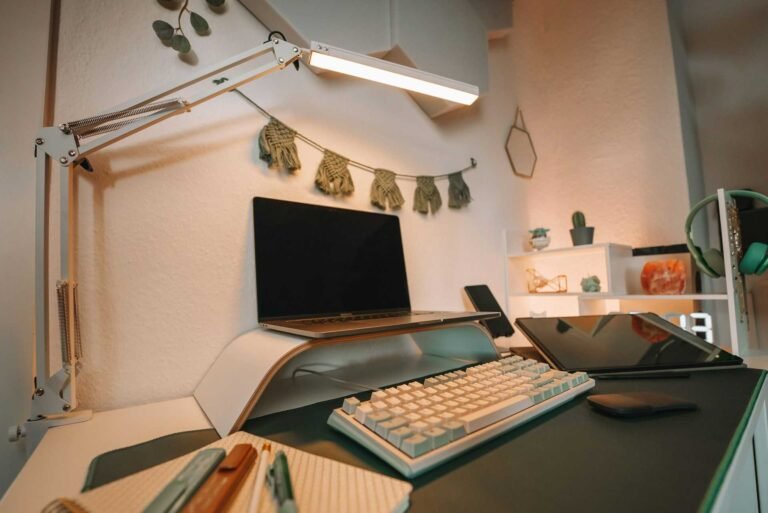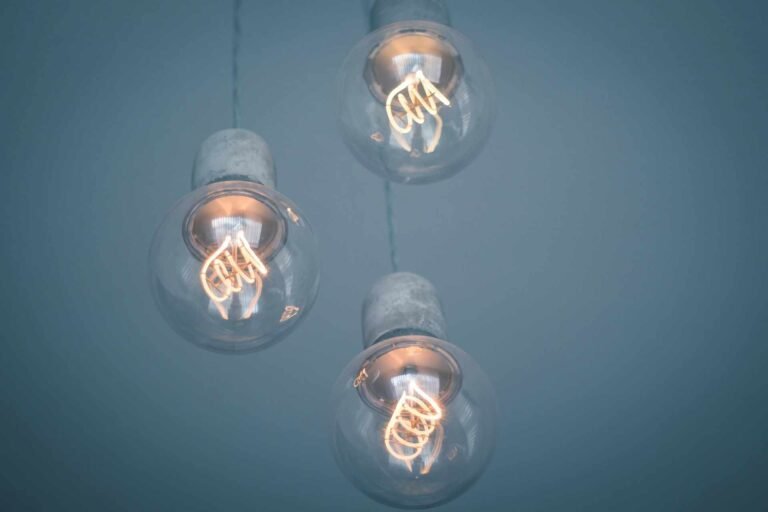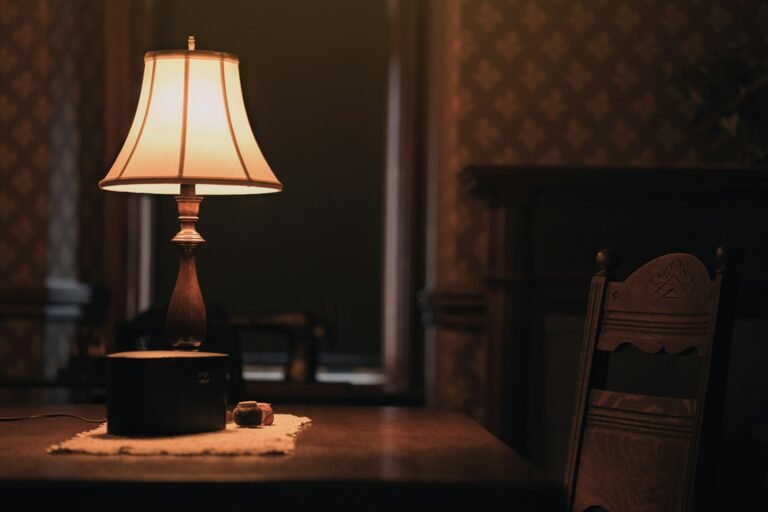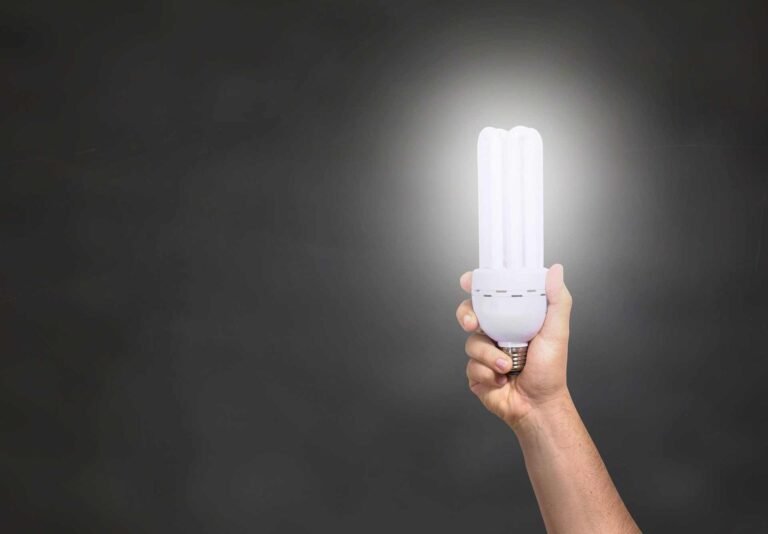LED Light Has Power But Won’t Work: Troubleshooting Guide

There’s nothing quite as frustrating as flipping a switch and watching your LED light refuse to cooperate, especially when you know it’s getting power. The good news? Most LED lighting issues are surprisingly straightforward to diagnose and fix, even when your LED light not working seems like a complete mystery.
Whether you’re dealing with a stubborn desk lamp, an unresponsive ceiling fixture, or any other LED that’s giving you the silent treatment, we’re here to walk you through the most common culprits and their solutions. Let’s shed some light on this dim situation together.
Why LED Lights Fail Despite Having Power
Before we dive into the nitty-gritty of troubleshooting, it’s helpful to grasp why LEDs behave differently from traditional bulbs. Unlike incandescent bulbs that simply burn out with a dramatic pop, LEDs can fail in more subtle ways. They might gradually dim, flicker intermittently, or stop working entirely while still receiving electrical current.
The complexity lies in their electronic components. Every LED contains a driver circuit that converts AC power to DC, regulates current flow, and manages heat dissipation. When any part of this delicate system malfunctions, you end up with an LED bulb not working but having power flowing to it. Think of it like having a perfectly fueled car that won’t start because of a faulty ignition system.
Temperature extremes, voltage fluctuations, manufacturing defects, and simple wear and tear can all contribute to these failures. The silver lining? Many of these issues are fixable with a bit of detective work and some basic troubleshooting steps.
Common Reasons Your LED Stopped Working
Driver Circuit Failure
The LED driver is essentially the brain of your lighting system. When this component fails, your LED light becomes like a smartphone with a dead battery, it might look fine on the outside, but it’s not getting the right type of power it needs to function. Driver failures often occur due to power surges, overheating, or simply reaching the end of their operational lifespan.
Signs of driver failure include complete darkness despite power being present, or intermittent operation where the light works sometimes but not others. This is particularly common in LED desk lamps that stopped working after power outages or during storms.
Loose or Corroded Connections
Electrical connections are the unsung heroes of any lighting system, and they’re surprisingly vulnerable to problems. Over time, connections can loosen due to thermal expansion and contraction, vibrations, or simply age. Corrosion from moisture exposure can also create resistance that prevents proper current flow.
These connection issues are especially prevalent in fixtures that experience frequent temperature changes or in areas with high humidity. A loose wire might make intermittent contact, causing your light to flicker or work sporadically before failing completely.
Heat Damage and Poor Thermal Management
LEDs generate less heat than traditional bulbs, but they’re also much more sensitive to temperature. When LEDs overheat, their internal components can degrade rapidly. Poor ventilation, inadequate heat sinks, or installing LEDs in enclosed fixtures not designed for them can lead to thermal damage.
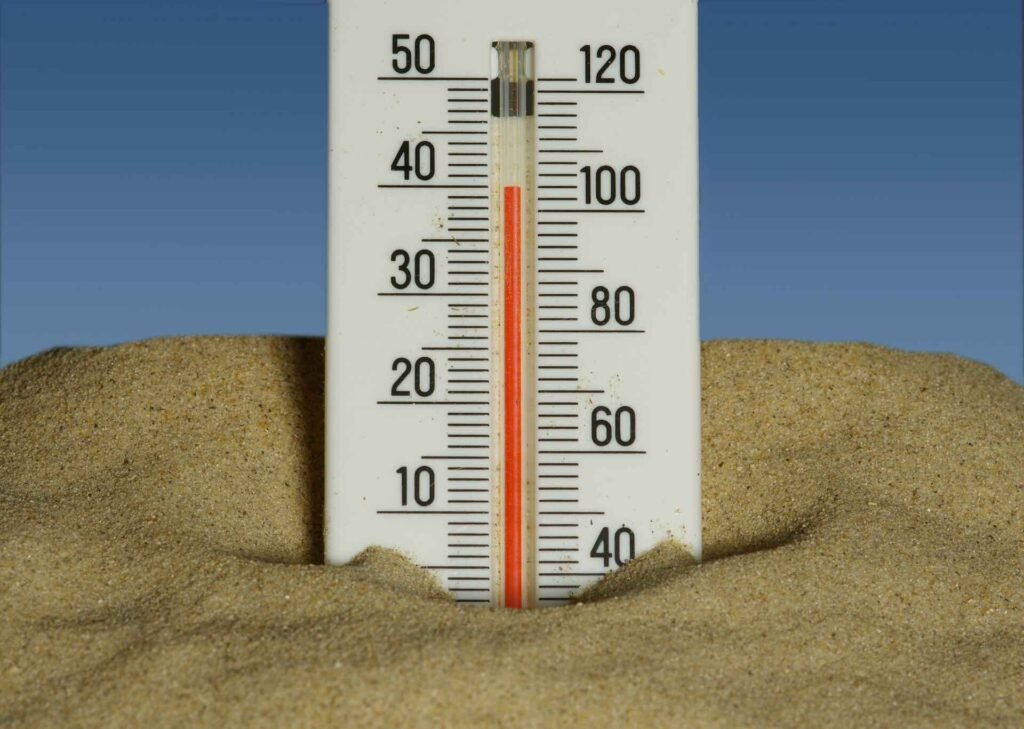
Overheated LEDs often exhibit color shifts, reduced brightness, or complete failure. If you’ve noticed your LED ceiling light not working after being used extensively, heat damage might be the culprit.
Voltage and Current Issues
LEDs require precise voltage and current levels to operate correctly. Too much voltage can damage the LED chips, while too little prevents them from lighting up. Electrical systems in older homes might have voltage fluctuations that can stress LED components over time.
Additionally, some LEDs are designed for specific voltage ranges. Installing a 12V LED in a 24V system, or vice versa, will either damage the LED immediately or cause it to fail prematurely.
Step-by-Step Troubleshooting Guide
Safety First: Power Down and Prepare
Before investigating any electrical issue, always turn off the power at the circuit breaker, not just the wall switch. This ensures your safety while handling potentially live wires. Gather basic tools like a multimeter, screwdrivers, and a flashlight or headlamp for better visibility.
Wait a few minutes after cutting power to allow capacitors to discharge. Even with the breaker off, some electrical components can retain charge and give you an unpleasant surprise.
Visual Inspection: What Your Eyes Can Tell You
Start with a thorough visual examination of your LED fixture. Look for obvious signs of damage like scorch marks, discoloration, or burnt smells. Check the LED bulb itself for cracks, dark spots, or any visible damage to the housing.
Examine all visible connections, looking for loose wires, corrosion, or signs of arcing. Pay special attention to junction boxes, wire nuts, and any splice points. Sometimes the problem is as simple as a wire that’s worked loose over time.
Testing Electrical Connections
Using a multimeter, verify that voltage is actually reaching your LED fixture. Measure at the fixture itself, not just at the switch, as wiring problems between these points could be the issue. For most household LEDs, you should see approximately 120V AC (or 240V in some regions).
If voltage is present at the fixture but the LED light bulb stopped working, the problem likely lies within the LED itself or its driver circuit. If there’s no voltage, trace back through the circuit to find where the power is being lost.
Component-Level Diagnosis
For fixtures with removable bulbs, try swapping in a known good LED bulb. If the new bulb works, you’ve confirmed that your original LED has failed. If the replacement doesn’t work either, the problem is in the fixture’s wiring or electrical supply.
For integrated LED fixtures where the bulb can’t be replaced, you’ll need to examine the driver circuit and internal connections. Look for bulged capacitors, burnt resistors, or other obviously damaged components.
Quick Fixes That Actually Work
The Simple Solutions Everyone Overlooks
Sometimes the most obvious fixes are the ones we skip. Ensure your LED is properly seated in its socket, a partially inserted bulb might make electrical contact but not enough for reliable operation. Similarly, check that any external power supplies or transformers are securely connected.
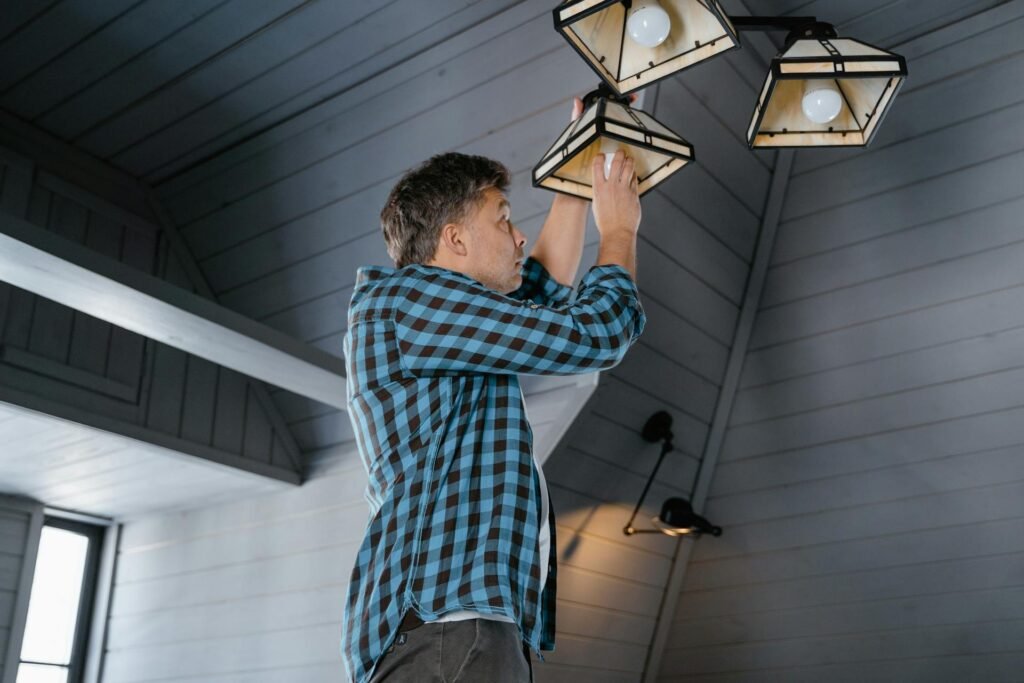
For USB powered desk lights, verify that the USB port is providing adequate power. Some older USB ports or hubs might not supply enough current for higher-wattage LED lights.
Resetting and Power Cycling
Many modern LED fixtures have electronic components that can benefit from a power reset. Turn off the breaker for 30 seconds, then restore power. This simple step can resolve glitches in the driver circuit or control electronics.
For smart LEDs or those with dimming capabilities, consult the manufacturer’s instructions for performing a factory reset. Sometimes these devices get stuck in an error state that only a proper reset can clear.
Addressing Environmental Factors
If heat appears to be an issue, improve ventilation around your LED fixture. Remove any insulation or debris that might be blocking airflow. For recessed lights, ensure there’s adequate clearance above the fixture for heat dissipation.
Consider the ambient temperature where your LEDs are installed. Extreme cold can also affect LED performance, though this is less common than heat-related failures.
When to Replace vs Repair
Evaluating Cost-Effectiveness
The decision to repair or replace often comes down to simple economics. For inexpensive LED bulbs, replacement is usually the most practical option. However, for expensive fixtures or integrated LED systems, repair might be worth considering.
Factor in your time and skill level when making this decision. Some repairs require electrical expertise that might be beyond the average homeowner’s capabilities. When in doubt, consult with a qualified electrician rather than risk safety or further damage.
Signs It’s Time for a New LED
Certain symptoms indicate that your LED is beyond repair. Visible damage to the LED chips, melted components, or repeated failures after attempted repairs all suggest it’s time to invest in a replacement.
Age is another factor to consider. While LEDs can last for decades under ideal conditions, real-world performance varies. If your LED lamp stopped working after several years of heavy use, replacement might be more reliable than repair.
Upgrading Opportunities
LED failure can be an opportunity to upgrade to better technology. Newer LEDs offer improved efficiency, better color rendering, and enhanced features like dimming compatibility or smart home integration.
Consider whether your current setup meets your lighting needs. This might be the perfect time to switch to dimmable LED desk lamps or explore options with better color temperature control.
LED Troubleshooting: Different Types, Different Solutions
| LED Type | Common Issues | Typical Solutions |
|---|---|---|
| Standard Bulbs | Driver failure, loose connections | Check connections, replace bulb |
| Integrated Fixtures | Heat damage, wiring issues | Improve ventilation, rewire |
| Strip Lights | Adhesive failure, cutting damage | Reconnect segments, replace damaged sections |
| Smart LEDs | Software glitches, connectivity issues | Reset device, check network |
| High-Power LEDs | Thermal shutdown, current regulation | Upgrade heat sinks, check drivers |
Different types of LED lights present unique challenges and solutions. Understanding these distinctions can save you time and help you choose the most appropriate troubleshooting approach.
Desk and Task Lighting Specific Issues
LED desk lamps face unique challenges due to their frequent use and adjustable positioning. The mechanical stress from constant repositioning can loosen internal connections over time. Additionally, these lights often operate for extended periods, which can accelerate component wear.
Pay attention to how your desk lamp responds to adjustment. If it flickers when moved or only works in certain positions, internal wiring may have developed intermittent connections. This is especially common in articulating arm designs where wires must flex repeatedly.
Ceiling and Overhead Fixtures
LED ceiling lights that stop working often face different challenges than portable lighting. These fixtures may be installed in environments with temperature extremes, poor ventilation, or electrical supply issues that affect multiple circuits.
When troubleshooting ceiling fixtures, pay special attention to the electrical box connections and ensure that junction boxes are properly rated for LED fixtures. Older electrical systems might not provide the stable power that modern LED drivers require.
Prevention: Keeping Your LEDs Happy
Creating the Right Environment
LEDs perform best in controlled environments with stable power, adequate ventilation, and protection from moisture. While this isn’t always possible, understanding these preferences helps you make better installation decisions and predict potential problems.

For desk lighting applications, consider the optimal positioning strategies that minimize stress on both the fixture and your eyes. Proper placement reduces the likelihood of overheating and mechanical damage while improving functionality.
Power Quality Considerations
Installing surge protectors and voltage regulators can significantly extend LED lifespan by providing cleaner, more stable power. This is particularly important in areas with frequent electrical storms or unstable power grids.
Consider upgrading your electrical system if you frequently experience LED failures across multiple fixtures. Older wiring, inadequate circuit capacity, or grounding issues can all contribute to premature LED failure.
Regular Maintenance Practices
Unlike incandescent bulbs that simply burn out, LEDs benefit from preventive maintenance. Regular cleaning prevents dust accumulation that can block heat dissipation. Gentle cleaning with appropriate materials maintains optimal light output and prevents premature aging.
Smart timer systems can help extend LED life by preventing unnecessary operation and reducing thermal stress. These automated controls also provide convenience while promoting energy efficiency.
Frequently Asked Questions
Why does my LED light flicker before stopping completely?
Flickering before complete failure usually indicates a failing driver circuit or unstable power supply. The LED driver is struggling to regulate current properly, causing intermittent operation before giving up entirely. This can also result from loose connections that are making intermittent contact as components heat up and cool down.
Can I fix an LED that has power but won’t turn on?
The fixability depends on the specific failure mode. External issues like loose connections, failed switches, or power supply problems are often repairable. However, internal LED chip failures or driver circuit problems typically require component replacement that may not be cost-effective for inexpensive fixtures.
How long should LEDs last before failing?
Quality LEDs should operate for 25,000 to 50,000 hours under normal conditions. However, this LED light lifespan can be significantly reduced by poor power quality, excessive heat, or manufacturing defects. In practice, expect 5-10 years of typical household use before replacement becomes necessary.
Will using the wrong dimmer damage my LED?
Yes, incompatible dimmers can damage LEDs or cause erratic behavior. LEDs require specific dimmer types that are designed to work with their electronic drivers.
Should I replace just the bulb or the entire fixture?
For fixtures with replaceable bulbs, try swapping the bulb first as it’s the most likely failure point. If the new bulb doesn’t work, then investigate the fixture wiring and power supply. For integrated LED fixtures, the entire unit typically needs replacement when the LED chips fail.
Conclusion: Lighting the Way Forward
Wrestling with an LED light that refuses to cooperate can feel like trying to solve a puzzle in the dark, but most of these electrical mysteries have surprisingly straightforward solutions. We’ve walked through the common culprits, from finicky driver circuits to loose connections that just need a little attention. The key is approaching the problem methodically, starting with the simple fixes before diving into more complex diagnostics.
Remember that LEDs, despite their reputation for longevity, are sophisticated electronic devices with their own quirks and vulnerabilities. Sometimes they need a gentle reset, other times a complete replacement. Whether your desk lamp has decided to take an unscheduled break or your ceiling fixture is playing hard to get, you now have the tools and knowledge to tackle these challenges head-on. And who knows? You might even discover that the solution was simpler than you imagined, perhaps just a loose wire waiting for a friendly reconnection.
Looking for more? Check out our desk lighting category for more articles and guides that may interest you!
Featured image credit: Photo by Riki Risnandar on Pexels
This content is for informational purposes only. Please verify current information directly on the retailer’s site before purchasing.

